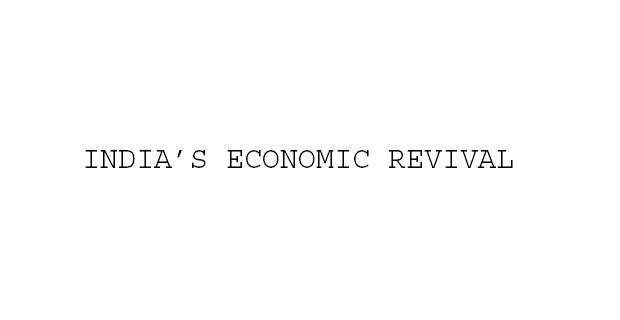INDIA’S ECONOMIC REVIVAL—AN OUTLOOK
After witnessing a quarterly slowdown during first ...
It reduces the nominal rate of growth and translates into low income growth, leading to a reduced aggregate demand in the economy. This scenario is reflected in private final consumption expenditure growth. Nominal GVA is the sum of EBIDTA and wages in the corporate balance sheet and indicates how income generated by a corporate entity is shared between the two key factors of production: capital (including land) and labour. Subdued nominal GVA growth due to low inflation means subdued EBIDTA and wage growth impacting consumption demand. Nominal GVA growth decelerated to 11.0% in 3QFY19 from the average 13.5% growth for 1QFY13-4QFY14. Even more worrisome is the deceleration in the nominal GVA growth of agriculture and allied activities to 2.0% in 3rd quarter of FY 19 from the average 14.1% for 1st quarter of FY 13-4th quarter of FY 14. According to expert’s opinion, this sharp decline in the nominal GVA growth of agriculture and allied activities has morphed into the ongoing rural distress. The revival of the growth in FY 20 either through fiscal or monetary stimulus, will not be easy for the new government. On the fiscal front, the headroom available is quite limited in view of the fiscal deficit budgeted at 3.4% of GDP for FY 20. Also, financing fiscal deficit will be expensive in view of household sector financial savings net of financial liabilities falling short of the net government borrowings (center, state and center's extra budgetary resources). Despite two consecutive rate cuts by the RBI, the borrowing cost in the market has remained at a relatively elevated level because of this shortfall. A slowdown in the growth of household savings has rendered deposit/investment mobilization by banks/non-banking financial companies expensive and the transmission of the policy rate cut is not finding a quick resonance in the financial market. Moreover, banks are struggling with high NPAs, while non-banking financial companies face credit freeze. Even monetary stimulus under the current situation may not be able to do the desired trick. Even RBI Governor Shri Shaktikanta Das said recently that credit flow is slow but admitted that it is steadily reviving. As per the Governor, credit growth had moderated to 7.1% at January end this year!











Comments.